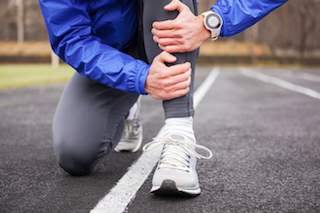Shin Splints
Wanting to get back into running but the pain in your shin is keeping you from reaching your fitness goals? Have you been advised to “run through it” only to feel the pain is steadily increasing? Have you noticed it is getting progressively worse with exercise and now it’s tender to touch along the shine bone especially the inner side?
Shin Splits is a broad catchphrase to describe pain in the lower leg as a result of exertion, so it’s technically not an actual diagnosis but rather an indication of the location of the pain. Before “shin splints” can be treated you need to get the diagnosis right because the treatment will vary significantly.
When our Podiatrist Dr Ella Wright examines a patient with lower leg pain she has 3 major conditions in mind that first need to be differentiated before she embarks on any treatment regime or make any recommendations.
The 3 usual suspects are:
- Compartment Syndrome
- Hair Line Stress Fracture
- Medial Tibial Stress Syndrome MTSS (most common)
Compartment Syndrome
The lower leg is divided into 4 compartments of muscles (anterior, lateral, posterior superficial & posterior deep). These muscles are wrapped completely in a tough inflexible material called fascia. As the muscle expands in size due to exercise, the pressure in these compartments can increase up to 20%. Excessive pressure can then affect the blood and nerve supply to the lower leg muscles. As blood carries oxygen and nutrients, if restricted, the onset of pain will be rapid escalating until the stress of exercise ceases. Restricted nerve supply can cause numbness, tingling or pain in the lower leg and foot.
Hair Line Stress Fracture
As the name indicates the fracture(s) are long and thin affecting the shin bone (tibia) usually a result of a poorly managed or misdiagnosed “Shin Splint” where the patient has been advised to “run through” it. Because it is a fracture, the pain in the shin won’t cease with rest and tends to be worse when climbing steps or squatting. Fractures are diagnosed via x-rays but extra care needs to be taken as the fracture line is very thin hence can be easily missed. if your clinical picture does not match up with your x-ray findings, additional testing would be warranted to avoid a “false negative” diagnosis. Unfortunately missed fractures is not uncommon causing unnecessary pain and complications.
Medial Tibial Stress Syndrome MTSS (aka Medial Tibial Periostitis)
Is the most common cause of shin pain but also often misdiagnosed. MTSS is caused by inflammation of the membrane (lining) that covers the bone called periosteum. Because the lower leg muscles and fascia attach to the periosteum and pull during exercise as a result of muscle contraction, it starts to cause irritation and consequently an inflammatory reaction hence the term Tibial Periostitis. The term “medial” means the inside of the lower leg which defines the location of the pain. When the periosteum is chronically irritated it can be seen on Xrays as it stirs up a reaction in the underlying bone.
The most common cause of MTSS is flat feet (foot pronation) as it causes the muscles of the foot that mostly originate in the lower leg to overwork in an attempt to stabilise the overly pronated foot. This is compounded when the person runs as the stress to the foot can increase 10 fold when the foot strikes the ground. Running on hard surfaces, slapping feet down or improper shoes/runners compound the problem. In some cases, repetitive stress can cause the muscles to tear away from their bone attachments (ouch!).
So What Factors Contribute To Shin Pain That I Can Look Out For?
Shin pain can be very common in those who are physically active, affecting approximately 20% of runners, and up to 35% in those whose job requires a lot of walking. Often this will present as a pain to lower third of your shins typically following exercise, which is only relieved with rest.
Broadly speaking the risk factors in developing shin pain can include:
- recent increased in body mass
- reduced range of motion in the ankle and foot
- limb length differences
- hips externally rotated (tight gluteal muscles)
- muscle strength and endurance of the muscles in your legs
- foot posture (overly high arched or low arched)
- flat feet
- running style
So how can we prevent shin pain from getting in the way of your fitness goals?
- Understanding the relationship between stress reactions and recovery time. When we put prolonged additional stress on our bones, joints, muscles and tendons there needs to be appropriate recovery time to avoid progressing from an inflammatory phase to a possible fracture.
- Gait Retraining – This will be exploring where we can modify the forces going through your ankle and leg, over striding can put additional stress on the structures in your foot, ankle and knee.
- Biomechanical Assessment – Often the way the ankle functions can put additional stress on certain tendons, joints and muscles causing unnecessary stress on surrounding structures. Custom made foot orthotics can correct poor foot posturing reducing fatigue and injury.
- During your consult – discussion into the potential cause of the shin pain by examining running styles, how your foot and ankle function.
- First aid: This includes Ice and active rest, with strapping and taping to support the fatigued and recovering structures.
- A stretching regime to reduce stiffness and allow for a greater range of motion.
- Dry needling to release muscle tension
- Shock wave therapy to promote healing and provide some analgesia.
When dealing with shin pain especially in active people long term management is the best strategy to avoid reoccurrences and progression of injury.
